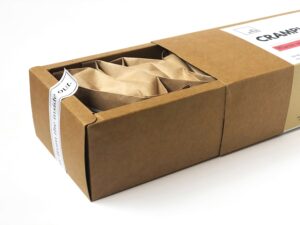In today’s competitive marketplace, the significance of private label packaging cannot be overstated. As a business owner or marketer, you understand that packaging is not merely a protective layer for your product; it is a powerful marketing tool that can influence consumer behavior and brand perception. When you invest in private label packaging, you are not just creating a vessel for your product; you are crafting an identity that resonates with your target audience.
This identity can differentiate your brand from competitors, foster customer loyalty, and ultimately drive sales. Private label packaging allows you to take control of your brand narrative. You have the opportunity to design packaging that reflects your brand values, aesthetics, and mission.
This level of customization can create a strong emotional connection with consumers, making them more likely to choose your product over others. By leveraging the power of private label packaging, you can transform an ordinary product into a memorable experience that consumers will associate with quality and trust.
Key Takeaways
- Private label packaging can give brands a competitive edge and increase brand loyalty
- Private label packaging offers benefits such as cost savings, control over branding, and flexibility in product offerings
- Creating a unique private label packaging design involves understanding target audience, brand identity, and industry trends
- Choosing the right packaging materials is crucial for maintaining product quality and sustainability
- Leveraging private label packaging can help brands differentiate themselves and attract consumers in a crowded market
Understanding the Benefits of Private Label Packaging
The benefits of private label packaging extend far beyond aesthetics. One of the most compelling advantages is cost-effectiveness. By opting for private label packaging, you can often reduce production costs while maintaining high-quality standards.
This is particularly advantageous for small businesses or startups looking to establish themselves in a crowded market. You can allocate resources more efficiently, allowing you to invest in other areas of your business, such as marketing or product development. Moreover, private label packaging provides you with the flexibility to adapt to market trends and consumer preferences.
Unlike branded products that may require lengthy approval processes for changes, private label options allow for quicker adjustments. This agility enables you to respond to consumer feedback and emerging trends, ensuring that your packaging remains relevant and appealing. In a world where consumer preferences can shift rapidly, this adaptability can be a significant competitive advantage.
How to Create a Unique Private Label Packaging Design

Creating a unique private label packaging design is an essential step in establishing your brand identity. To begin this process, consider your target audience and what resonates with them. Conduct market research to understand their preferences, values, and purchasing behaviors.
This insight will guide your design choices, ensuring that your packaging speaks directly to your consumers’ desires and expectations. Once you have a clear understanding of your audience, focus on the visual elements of your packaging. Choose colors, fonts, and imagery that align with your brand’s personality.
For instance, if your brand emphasizes sustainability, consider using earthy tones and eco-friendly materials in your design. Additionally, think about the shape and functionality of your packaging. Unique shapes can catch the eye on store shelves, while functional designs enhance the user experience.
Remember, your packaging should not only look good but also serve a purpose that aligns with your brand values.
Choosing the Right Packaging Materials for Your Brand
| Packaging Material | Strength | Cost | Sustainability |
|---|---|---|---|
| Cardboard | Medium | Low | High |
| Plastic | High | Low | Low |
| Glass | High | High | Medium |
| Paper | Low | Low | High |
Selecting the right packaging materials is crucial for conveying your brand’s message effectively. As you explore options, consider factors such as sustainability, durability, and cost. Eco-friendly materials are increasingly important to consumers who prioritize environmental responsibility.
By choosing biodegradable or recyclable materials, you can appeal to this growing demographic while reinforcing your brand’s commitment to sustainability. Durability is another key consideration. Your packaging must protect the product during transit and storage while also maintaining its visual appeal.
Research various materials to find the right balance between sturdiness and aesthetics. For example, glass may convey luxury but can be heavy and prone to breakage, while lightweight plastics may be more practical for shipping but could compromise perceived quality. Ultimately, the materials you choose should align with both your brand identity and the expectations of your target market.
Leveraging Private Label Packaging to Stand Out in the Market
In a saturated market, standing out is essential for success. Private label packaging offers you a unique opportunity to differentiate your products from competitors. By creating distinctive designs and utilizing innovative materials, you can capture consumer attention and create a lasting impression.
Consider incorporating unique features such as interactive elements or augmented reality experiences that engage consumers on a deeper level. Additionally, storytelling through packaging can be an effective way to connect with consumers emotionally. Share the story behind your brand or product through visuals or text on the packaging.
This narrative can create a sense of authenticity and transparency that resonates with consumers seeking meaningful connections with brands. By leveraging private label packaging as a storytelling medium, you can foster brand loyalty and encourage repeat purchases.
The Impact of Private Label Packaging on Consumer Perception

Consumer perception plays a pivotal role in purchasing decisions, and private label packaging significantly influences this perception. Well-designed packaging can elevate the perceived value of your product, making it appear more premium or desirable. When consumers encounter visually appealing and thoughtfully designed packaging, they are more likely to associate it with quality and trustworthiness.
Moreover, packaging serves as a silent salesperson on store shelves. It communicates essential information about the product while also conveying brand values and personality. If your packaging effectively communicates quality, sustainability, or innovation, it can positively impact how consumers perceive your brand overall.
In contrast, poorly designed or generic packaging may lead consumers to question the quality of your product or overlook it entirely in favor of more visually appealing options.
Tips for Successfully Launching Your Private Label Packaging
Launching private label packaging requires careful planning and execution to ensure success. Start by developing a comprehensive marketing strategy that outlines how you will introduce your new packaging to consumers. Utilize social media platforms, email marketing campaigns, and influencer partnerships to generate buzz around your launch.
Engaging storytelling about the design process or the inspiration behind your packaging can create excitement and anticipation among potential customers. Additionally, consider conducting pre-launch testing with focus groups or surveys to gather feedback on your packaging design before it hits the market. This valuable insight can help you make necessary adjustments and ensure that your packaging resonates with consumers.
Once launched, monitor consumer reactions closely through sales data and social media engagement to gauge the effectiveness of your private label packaging strategy.
Case Studies: Successful Brands Using Private Label Packaging
Examining successful brands that have effectively utilized private label packaging can provide valuable insights for your own strategy. For instance, consider how Trader Joe’s has built its brand around distinctive private label products with eye-catching packaging designs that reflect its quirky personality. The simplicity and boldness of their labels create an inviting shopping experience that encourages customers to explore new products.
Another example is Costco’s Kirkland Signature line, which has gained a reputation for quality at competitive prices. The straightforward yet elegant packaging communicates value without compromising on aesthetics. By focusing on quality ingredients and transparent labeling, Kirkland Signature has successfully positioned itself as a trusted alternative to national brands.
In conclusion, private label packaging holds immense potential for businesses looking to carve out their niche in the market. By understanding its power and benefits, creating unique designs, choosing appropriate materials, leveraging storytelling, and learning from successful case studies, you can harness this tool to elevate your brand and connect with consumers on a deeper level. As you embark on this journey, remember that effective packaging is not just about aesthetics; it’s about creating an experience that resonates with your audience and fosters lasting loyalty.
If you are interested in learning more about private label packaging, you should check out the portfolio section of Blur&Co’s website. They showcase their expertise in creating unique and eye-catching packaging designs for private label products. You can find more information about their approach and style on their About page. Additionally, if you have any concerns about privacy when working with a design agency, you can read their privacy policy here.
FAQs
What is private label packaging?
Private label packaging refers to the practice of a company creating and selling products under their own brand name, rather than the brand name of the manufacturer. This allows retailers to offer unique products to their customers without the cost and time associated with developing their own products.
What are the benefits of private label packaging?
Private label packaging allows retailers to differentiate themselves from their competitors, build brand loyalty, and potentially earn higher profit margins. It also gives retailers more control over product quality, pricing, and marketing.
How does private label packaging work?
Retailers work with manufacturers or suppliers to create custom packaging for products that are then sold under the retailer’s brand name. The retailer may have input on the product design, packaging materials, and branding elements.
What types of products can be sold with private label packaging?
Private label packaging can be used for a wide range of products, including food and beverages, cosmetics, household goods, clothing, and more. Essentially, any product that can be branded and packaged can be sold using private label packaging.
Is private label packaging the same as white label packaging?
While the terms are often used interchangeably, there is a subtle difference. Private label packaging typically involves customizing a product for a specific retailer, while white label packaging usually involves a manufacturer creating a generic product that can be rebranded and sold by multiple retailers.




